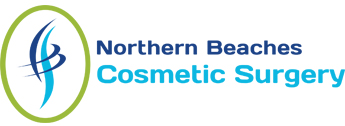Scar Revision Surgery
How are scars formed?
A scar, composed of fibrous tissue, is formed when the skin is significantly damaged and repaired by a natural healing process. Scars may be formed because of injuries like a cut or a burn, infections, surgery involving an incision in the skin, and skin conditions like acne.
The appearance and composition of the scars vary depending on the size, depth and cause of the wound, its location, and the skin type, the age of the person, body’s healing mechanism and the inheritance of scarring.
Scars generally fade over time and become hardly noticeable, but in many patients, the scars may appear prominently that may be flat, lumpy, depressed, or discoloured. These scars may require treatment and scar revision is the term used to describe any procedure that reduces the appearance of scars.
How is scar revision performed?
There are several methods for scar revision that include surgical revision, dermabrasion, laser treatments, injectable fillers, chemical peels, fat grafts and creams.
What is autologous fat transfer?
Autologous fat transfer is one of the methods used for a scar revision to elevate depressed scars. Also, referred to as microlipoinjection or fat grafting, autologous fat transfer, is a process of extracting fat by a process called liposuction from another part of your body (generally from abdomen, thighs or buttocks) and using it for re-injection into the scar area.
How is autologous fat transfer performed?
Autologous fat transfer involves the following steps:
A local anaesthetic is injected into the donor site (the area from where the fat is removed) to numb the area and make you feel comfortable. A cannula, a thin tube, connected to a syringe is then inserted through a small incision in the skin and fat is sucked out carefully.
The extracted fat cells are then processed, purified and prepared for re-injection.
Area of re-injection or the recipient site (scar area) is marked out and cleaned with an antibacterial agent. A local anaesthetic is then injected to numb the area. By inserting another cannula with a syringe into the scar area, your surgeon injects fat cells carefully under the skin.
What are the risks and complications?
Cosmetic surgical procedure is a formal risky surgical operation
It is Not a “simple beauty treatment”
There are some common risks associated with fat transfer. However, autologous fat transfer is appreciated as there is unlikely allergic reaction or rejection since the fat cells from your own body are used. The common risks are include:
- Bleeding from the donor and the recipient sites
- Overfilling and/or under-filling of the treatment area
- Bruising and swelling at the injection sites
- Redness and tenderness in the treated area
- Infections and abscesses (pus filled lesions)
- Irregular skin texture
- Tissue lumps observed as swelling due to overfilling of the scar area
Is there any recovery period or downtime after the scar fat transfer revision procedure?
Following the scar fat transfer revision procedure, you can return to your normal activities and work in 1-2 days. You may experience mild pain and discomfort; there may be swelling, bruising and redness at the injection sites. Swelling that occurs at the treated scar area may be noticeable for several weeks or even months after the procedure.
How long with results of treatment last?
Results are almost immediate and long lasting, usually permanent. However, the procedure may be repeated at regular intervals until the desired improvement of the scar has been achieved as fat gets reabsorbed into the body quickly.

